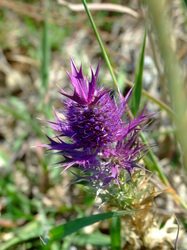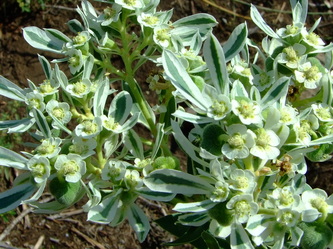I am grateful to have a partner in my endeavor to learn all I can about getting back to the land. Her name is Sue, and this past September we stayed in Winfield, KS to attend the annual Kansas Native Plant Society's weekend of learning about our native prairie plants. The society has events planned all over the state throughout the year, and each fall the KNPS has one huge weekend event. It just so happened that this year the annual event was held not far from where I live.
I have often wandered around my property with several books and my camera, trying to identify and catalog the many native plants and trees on my farm, wishing there was someone who could come out and wander with me, telling what this flower was, what that tree was, what they produce and how to use them. On one of my endless internet research quests I came across http://www.kansasnativeplantsociety.org/
The people who lead these excursions, as well as most of the members, are extremely knowledgable about plants and identification. Some were biologists, explaining how the plant is used by the insects and animals within the ecosystem, some were teachers by trade, so were great at putting things in terms others could understand, some knew all the Latin names and subspecies of each plant, and others were people like me who are just interested in the world around them (although everyone there knew more than I did, and I mean
EVERYONE!!!)
My goal in learning all of this is two-fold; I want to restore my land as much as possible for the benefit of my livestock as well as the local fauna, and I have been studying the medicinal uses of plants for many years. My plan is to only plant things that are beneficial and serve either a food or a medicinal purpose. I want to accomplish this by using as many native plants as possible, as my back acreage was farmed for many years and because of that the soil is off balance, leading to an imbalance of native plants and allowing non-beneficial
weeds to thrive, essentially eliminating any chance of growth for desirable native species.
Sue and I had a great time, drove all over the place, spent hours and hours in the middle of nowhere, and were shown places that I never even knew existed, and I've lived here my entire life!
We stayed in Winfield for three days, visiting private ranches, the Slate Creek Wetlands in Oxford, KS, http://www.kdwpt.state.ks.us/news/KDWPT-Info/Locations/Wildlife-Areas/Region-4/Slate-Creek , and the Chaplin Nature Center in Ark City, KS, http://www.wichitaaudubon.org/cnc.html. If you have never been to the Chaplin park, I suggest you check it out. If you think the Arkansas River is dirty and fairly unattractive, visit this state park and see the river as it is supposed to be, beautiful and clear. And who knew there was a wetland preserve in Kansas?? I plan to go back to both in the spring to see what is blooming at that time of year.
One of my greatest loves is bees. Not only do I think that they are adorable, but without them our food supply, and the food supply for the entire ecosystem, would suffer greatly. People so often react negatively to bees, and attempt to kill them out of fear. But without bees to cross pollinate trees and plants, humans would be in trouble. The fact that we can also harvest honey from them, which never spoils and can treat a myriad of health problems, makes them invaluable. I use honey inside and out for all the beings here at my farm, for all sorts of ailments. If you aren't allergic to it, using honey on cuts and scrapes is the best way I have found to treat them. Honey is also a natural antibiotic. Putting up bee hives here at my farm is on my list for spring, so watching the underground hive activity really was a treat.
While at the Slate Creek Wetlands, I saw the most amazing thing; an underground colony. I knelt right in the middle of it, watching the bees go about their business, leaving the hive to go find food, then coming back covered in pollen to take back to their underground home. Fascinating! I could have watched those bees all day.
And happily, while venturing off on our own, sure that we could make it to our destination, Sue and I got lost and ran across a candy store in Dexter, KS, that still makes their own candy! We drove past the old store, and Sue asks me if we should turn around. My response? Of course!! When would I ever get back, and how often do you run across a family owned candy store in the middle of nowhere?? The store even has glass partitions that allow customers to watch them make candy. Still family owned, Henry's was opened over fifty years ago by
Tom Henry. Ever had an O'Henry candy bar? Mr. Henry invented it. Sue and I bought a boatload of candy and were late getting to the nature center, but I am so glad we stopped.
Henry's Candy Company, as is fitting for a store that makes you feel as though you have stepped back in time, does not have a website. I did however find this site, http://getruralkansas.org/Dexter/57Explore/450.shtml, that gives a bit more information, as well as lots of information about small towns in Kansas. The lesson? Get out of the city and support these tiny businesses, before they are all gone!
Even if you don't live in Kansas, most states have native plant societies. Look them up. So often I find myself taking my surroundings for granted, and I forget to appreciate the beauty of my piece of the world. This trip opened my eyes and taught me to not only to look, but to see.
I have often wandered around my property with several books and my camera, trying to identify and catalog the many native plants and trees on my farm, wishing there was someone who could come out and wander with me, telling what this flower was, what that tree was, what they produce and how to use them. On one of my endless internet research quests I came across http://www.kansasnativeplantsociety.org/
The people who lead these excursions, as well as most of the members, are extremely knowledgable about plants and identification. Some were biologists, explaining how the plant is used by the insects and animals within the ecosystem, some were teachers by trade, so were great at putting things in terms others could understand, some knew all the Latin names and subspecies of each plant, and others were people like me who are just interested in the world around them (although everyone there knew more than I did, and I mean
EVERYONE!!!)
My goal in learning all of this is two-fold; I want to restore my land as much as possible for the benefit of my livestock as well as the local fauna, and I have been studying the medicinal uses of plants for many years. My plan is to only plant things that are beneficial and serve either a food or a medicinal purpose. I want to accomplish this by using as many native plants as possible, as my back acreage was farmed for many years and because of that the soil is off balance, leading to an imbalance of native plants and allowing non-beneficial
weeds to thrive, essentially eliminating any chance of growth for desirable native species.
Sue and I had a great time, drove all over the place, spent hours and hours in the middle of nowhere, and were shown places that I never even knew existed, and I've lived here my entire life!
We stayed in Winfield for three days, visiting private ranches, the Slate Creek Wetlands in Oxford, KS, http://www.kdwpt.state.ks.us/news/KDWPT-Info/Locations/Wildlife-Areas/Region-4/Slate-Creek , and the Chaplin Nature Center in Ark City, KS, http://www.wichitaaudubon.org/cnc.html. If you have never been to the Chaplin park, I suggest you check it out. If you think the Arkansas River is dirty and fairly unattractive, visit this state park and see the river as it is supposed to be, beautiful and clear. And who knew there was a wetland preserve in Kansas?? I plan to go back to both in the spring to see what is blooming at that time of year.
One of my greatest loves is bees. Not only do I think that they are adorable, but without them our food supply, and the food supply for the entire ecosystem, would suffer greatly. People so often react negatively to bees, and attempt to kill them out of fear. But without bees to cross pollinate trees and plants, humans would be in trouble. The fact that we can also harvest honey from them, which never spoils and can treat a myriad of health problems, makes them invaluable. I use honey inside and out for all the beings here at my farm, for all sorts of ailments. If you aren't allergic to it, using honey on cuts and scrapes is the best way I have found to treat them. Honey is also a natural antibiotic. Putting up bee hives here at my farm is on my list for spring, so watching the underground hive activity really was a treat.
While at the Slate Creek Wetlands, I saw the most amazing thing; an underground colony. I knelt right in the middle of it, watching the bees go about their business, leaving the hive to go find food, then coming back covered in pollen to take back to their underground home. Fascinating! I could have watched those bees all day.
And happily, while venturing off on our own, sure that we could make it to our destination, Sue and I got lost and ran across a candy store in Dexter, KS, that still makes their own candy! We drove past the old store, and Sue asks me if we should turn around. My response? Of course!! When would I ever get back, and how often do you run across a family owned candy store in the middle of nowhere?? The store even has glass partitions that allow customers to watch them make candy. Still family owned, Henry's was opened over fifty years ago by
Tom Henry. Ever had an O'Henry candy bar? Mr. Henry invented it. Sue and I bought a boatload of candy and were late getting to the nature center, but I am so glad we stopped.
Henry's Candy Company, as is fitting for a store that makes you feel as though you have stepped back in time, does not have a website. I did however find this site, http://getruralkansas.org/Dexter/57Explore/450.shtml, that gives a bit more information, as well as lots of information about small towns in Kansas. The lesson? Get out of the city and support these tiny businesses, before they are all gone!
Even if you don't live in Kansas, most states have native plant societies. Look them up. So often I find myself taking my surroundings for granted, and I forget to appreciate the beauty of my piece of the world. This trip opened my eyes and taught me to not only to look, but to see.



















 RSS Feed
RSS Feed